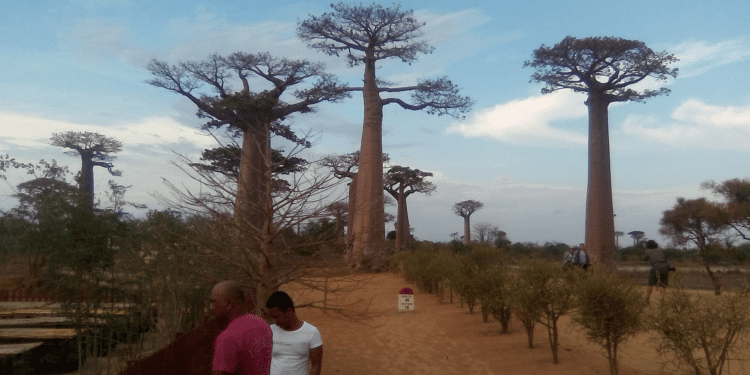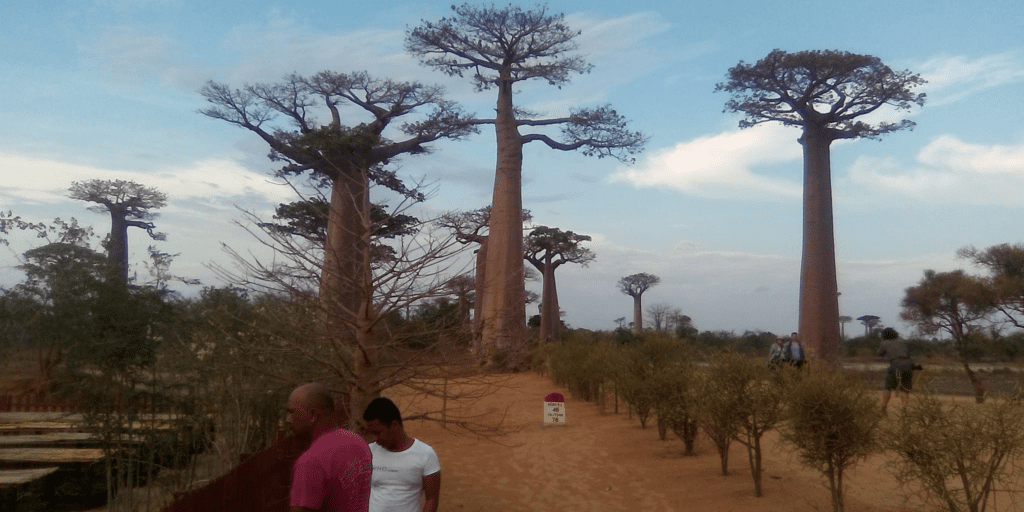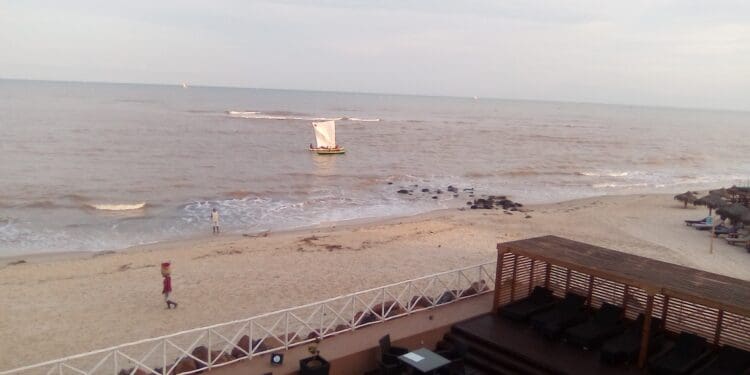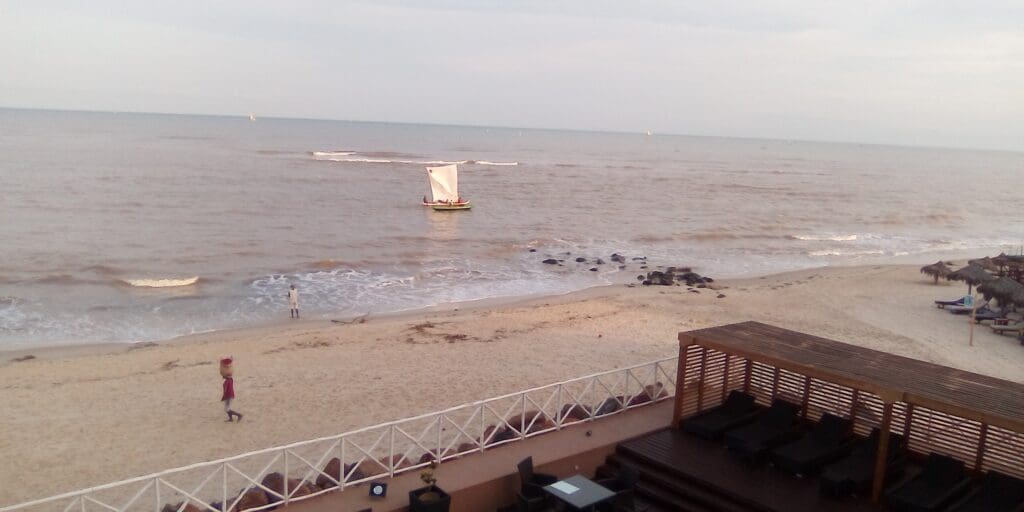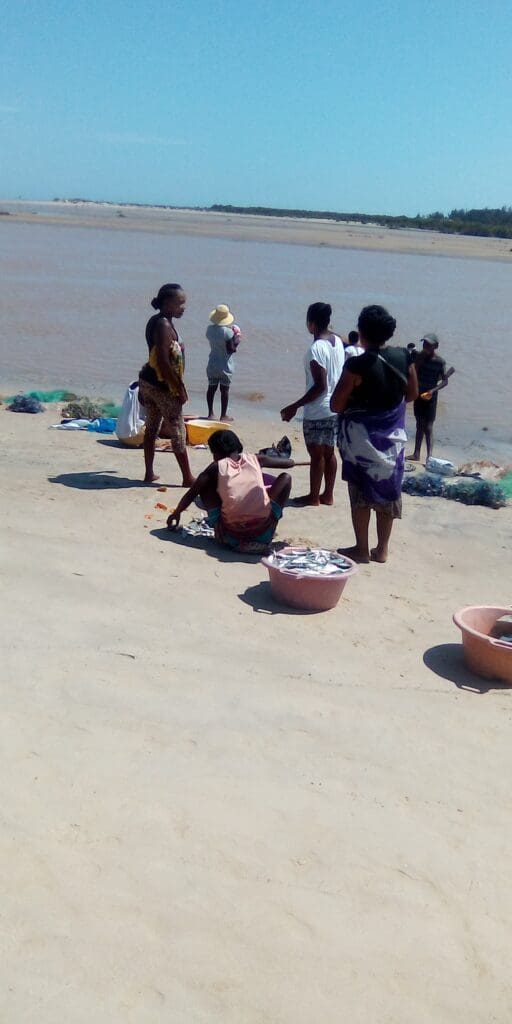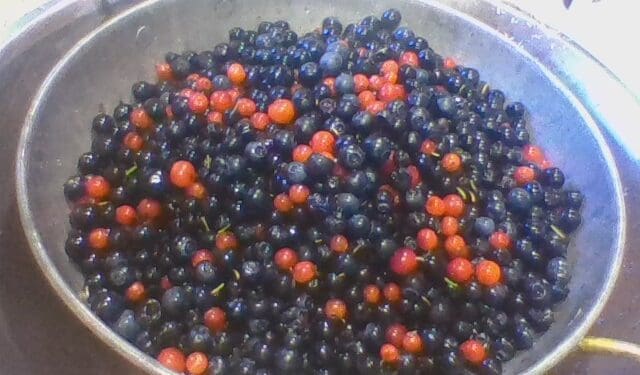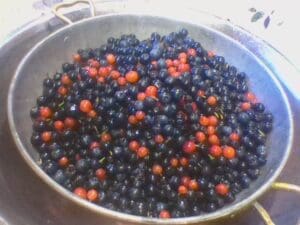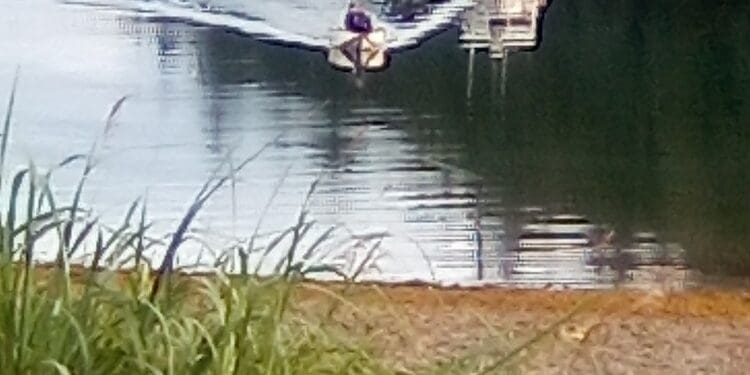Saturday in Betania, Madagascar
We had our first workshop today in Betania (not Bethany, as I thought was the name). We were delayed in getting to a spot we could get to our little ferry boat on the low tide, then had to move venues in the town so we could use the computer for a slide presentation, then had to bag using the projector and just use the computer due to the light. Once we got down to business, it went very well.
Most of the men were out fishing, so it was me and the women who process and market the fish. So, we talked about the fish business and fish products. There was keen interest in canning and salting fish to preserve it in lieu of refrigeration, so we’ll work on putting these practicals together.
Once we start in on the workshops, I sometimes wonder if I’m teaching my participants anything or it’s me that’s doing all the learning. Either way, the more we talk, the more we learn from each other about our respective fish businesses, and that’s what the point of the farmer to farmer program is, I think. The women in the room certainly knew their business. I left them with 3 cans of smoked coho salmon to try that I bought from Chris, and that was greeted with approval and gratitude.
This is the first place I’ve been where salt is easy to get and relatively cheap as there’s a salt mine or salt manufacturing nearby, according to Zo. And when we were waiting on one of the docks for the ferry pickup, there were 50 kilo bags stacked on the dock. When (and sadly, if, these days) the fishermen bring in more fish than they have capacity to smoke to fulfill a contract with a local buyer, the women can salt the excess fish to keep it until they have room in the smokers, and then slack the fish out in freshwater for half a day to freshen it before putting it in the smoker. It seems I always start out these assignments with trepidation about having enough material or practicals to cover, and then seem to find out where we can find something new to do together – that might be new to both parties – and move the learning on both sides forward. That’s the case with discovery that cheap salt is available here, and I’m excited to salt fish like they did for centuries before refrigeration.
I also found out they do have access to ice. Again, more surprises. They can make fish as good as I do. The ice will just melt faster!
Mangos are ripe and everywhere. I bought 5 yesterday for 50 cents. I stopped at 3, eating the smaller ones, and saved the two big ones for today. I remember gorging on mangos in Sierra Leone and getting a side ache like after eating too many green apples as a kid, only at the time I wasn’t sure if it was a side ache or appendicitis, and remember the relief when the ache went away as I was a long way from medical help in my Peace Corps village – just like everyone else who lived there was.
We went to dinner when we got back at about 730 pm. As we walked down a little breeze way from the street to the restaurant, we passed by a woman with a good size orange rockfish-looking fish, apparently looking to sell it to the restaurant. The fish was stinky, as it wasn’t iced and may never have been since it was caught. I had a nice local beef (Zebu) Malagasy dish with large beans over rice. I’ve tried fish here a few times, and don’t particularly like they way they cook it. Lots of local beef and pork and chicken to choose from, and that I have liked.
We got a good little thunderstorm come in and dump a bunch of rain. It started just as we finished dinner about 830 and lasted an hour, or maybe less.
After a week here, we finally got rolling yesterday with our first real workshop, and now we have tomorrow off. Africa time.
I’m up early this morning as I seem to do when I’m on these assignments, and listening to the Mississippi State football game, streaming XM radio through my phone on the hotel wifi. Still a wonder and contradiction to watch fishermen leave the beach under sail in dugout canoes and listen to a football game half the world away.
Friday in Morondava, Madagascar
We arrived in Morondava, Madagascar a few days ago from the capital, Tana. A 3 hour ride to Antsirabe through endless agriculture fields worked by hand, a very cool town where we had rooms overlooking the town square, which is not square but a big long oval. The roads here are very narrow. Not room enough for 2 semi trucks with trailers to pass I don’t think. The next 11 hours were through scrub and high arid country, a good 8 to 9 hours of it on poor roads. Did not pass many vehicles this time of year. Much less population and seemed to be mostly cattle herders here. Not much wildlife – a few birds and lizards. When we dropped out of the highlands to the coastal plain, we stopped for lunch. Local tilapia from the river nearby. Not bad. Malagasy food is not very spicy – much unlike West Africa foods.
Our hotel in Morondava is right on the beach, and we can watch the fishermen leave in their brightly colored canoes starting at 3 in the morning, and then return all day. Many of the canoes are rigged with sails and an outrigger on one side. The boats just glide through the water.
We went to Bethany yesterday. We had to cross a small shallow river, and went by a motorized canoe. On the way back, we waded half way across the river because it was low tide, to an island in the middle, then the canoe took us the rest of the way. It was not a far crossing, nor dangerous.
Our meeting with the fishing families went well. We went through the usual feeling out of each other. After asking for a freezer and outboard motors, neither of which I happened to have in any of my pockets, we got more comfortable with each other and I started to ask them about their fishing operations, their fish processing and fish selling, the type of smoker they use, prices they get for the fish they sell, how they decide what fish to smoke and what fish to sell fresh, etc., etc. It was a very productive meeting for me. I often – I’ll say always- come into these assignments with a lot of trepidation – am I going to be able to provide any real advice to the peopleth hosting me? – and always I find I can and the trepidation turns into a sort of – high?- maybe? – putting together slides on the computer to talk about. Often I find my brain outpacing the speed of my typing. Sometimes I’ll just put down the subject ideas in rapid fire so I don’t forget them and come back and fill in the blanks.
The meeting ended in the early afternoon, and it was hot. Real hot. The normally stiff ocean breeze had laid down. The sand was so hot I could not walk on it in bare feet. My supervisor (Zo) and translator (Andry) accompanying me were as hot and worn out as I was when we got back, which gave me a little solace. Zo had proposed at the meeting we go out fishing all day with the men and then have a workshop in the afternoon. I think we all saw that might kill us………
I was so hot when I got back I stripped off my skanky clothes, and put them in the sink to hand wash. It’s relatively dry here so the clothes dry quickly on the veranda. I put the shower on the coldest setting, which of course was not very cold, and it was just enough to take the edge off. I then crashed for a long nap to recover.
Today, we went to a second village where we’ll work next week, just to see it. We drove as far as we could, then hiked maybe a quarter mile down to the beach. Fishermen passed us with their small gillnets draped over their canoe paddle that they carried on their shoulder.
We watched a couple fishermen skillfully surf their canoes to the beach. Women then helped to get the fish out of the boats. Men fish. Women process and sell the fish. Neither does the other job from what I can tell. One of the women came over with a mackerel looking fish about 15 inches long, and a couple smaller fish to see if we wanted to buy any. We didn’t, but were able to engage her about the price of fish. From what we could tell, the price of mackerel – which she said is rare now – was about $1.75/lb. Which is a good price to fishermen for whole fish of many species in Alaska. Of course, that’s the dock price, and not what it would cost in a store or further down the supply chain. Great information.
The woman returned to the boat to help offload the boat. A young girl of maybe 3 years old was out playing in the heavy surf. Having the time of her life. Laying down and body surfing and just bopping around like 3 year olds everywhere do. Her mother chastised her several times to come in from the surf, but the girl kept playing as long as she could get away with it.
Closing up shop
Took a couple in their young 30’s over to the cabin yesterday. They are about the same age as Sara and I were when we bought it back in 1996 from Pete. Kurt had helped me start cleaning out some things there the day before, and these two said they’d be pack mules for a ride over to take a look at it.
Lots of memories in this cabin. A walking stick I cut for my mom that I’d saved. An afghan my grandmother made for me, and a blanket my mom sent with me to college, I think. Two fleece blankets given as a wedding present by Ken and Audrey Dunshie. A statue of a dolphin my Uncle Ted gave me as a memento from Tampa. A set of wedding goblets from Erik’s first wedding that I won at a gift exchange auction at the Campbell’s. A photo of Nick Campbell in his scout uniform just returned from 10 days at scout camp in Whitehorse hugging his television. I stopped and gave that to his mother to give to Nick’s kids next time they see them. A photo of me with the biggest buck I ever got on Admiralty that walked right up to me. My grandfather’s whitetail deer racks from the 1930’s from New York state. Several needlepoint (?) pictures made by my grandma of farm scenes and Polish dancers. Old card game scorecards from the Josephsons. And lots of good hunting gear that I didn’t bring home, from nice gun cases to fancy flashlights – all left by people who used the cabin and didn’t take their gear home with them and didn’t put their names on it. A little ammo bag with Sara’s Dad’s name Leo Hannan on it.
Many of our family have been there over the years, and lots and lots of friends. We packed up 3 back packs of stuff and 2 hand bags each.
Then we took a tour of the original lot that was subdivided among 4 buddies. A cabin behind us now occasionally used by the owner’s kids, who were on their parent’s backs when Sara and I first moved in. Another lot next to it that was never built because the friend died over on Douglas when his boat started dragging anchor, and he tried to get it in his punt and capsized. The last place is a sauna owned by people from Fairbanks, last I knew.
We returned to the cabin, and hauled the gear to the boat. I got, as expected, an email today, from the couple. They’ll take the cabin. I knew they would. Just like Pete knew I would when I looked at the place he’d built in 1988. All I needed was their word. Just like Pete did of me. No security deposit necessary. They’ll put the financing together and we’ll figure out a closing date. I left everything else – pots, pans, dishes, bedding, chain saw, splitting malls, radios, a good supply of firewood, a long ladder to get up on the roof, a leaky skiff for going to Admiralty, and all the tools. Felt good to pass on a rock solid cabin to younger people who will use it and love it like it should be. And both of them are Juneau kids who went to school with Jeff and Teri and Jeanne and Ron’s kids. I’m sure I’ll go back to pick berries, but don’t have remorse from selling the place. I hadn’t been getting there even once a month anymore, and friends who used to use it sometimes now have wives and other lives. I’m excited for the new owners. And feeling a little old.
Trophy Harvest
Got over to the cabin after not getting over there since May. I was hoping there’d be a few berries left as I hadn’t picked at all this summer, except for the Haines America cherries at Roy and Brenda’s.
Boy, was I surprised.
The huckleberries – blue and red – were as prime as I’ve ever picked. It seemed late for them to be this prime, but it sure wasn’t. A few blueberries were left, too. Just like the cherries were the best I’d picked in Haines earlier this summer.
I picked about 6 to 7 hours over the weekend, with lots of coffee drinking and reading old Alaska magazines and reading an old book about contact with the Tlinghit in the mid-1800’s in between.
The murder of crows over there around the island is something else. There are about 30 of them. And they will sort of swarm over an area – sometimes me – and caw and caw and caw – about nothing. Kind of like the sea lions do at Little Island. I can’t recall seeing this behavior anywhere else.
I looked up in the log and saw I was only over there for 11 days last year, and this would be my 6th to 8th days this year.
Might be time to sell the place to some younger people who will use it more.
Now the not fun part of discarding all the leaves and sticks in the berries a handful at a time.
Luckily, lots of football on the XM radio to listen to.
String Cheese
Tom Morgan, who I trained and served with in the Peace Corps, and his nephew Jasper, were here for a week. Tom and his wife Sarah and I don’t see each other all that often, but, like the others in our group that trained at the University of Oklahoma in 1986, we are all family.
Jasper is the same age as my nephew who was here a few weeks ago, and the same age as the twins were when they were here last year from Mount Vernon. When I asked his grandma what he ate, she sent me a list of 5 things, but I thought this was just what he liked. Nope. It’s all he eats. Doesn’t eat salmon. Or crab. Or moose. The primary food he consumes is string cheese. From day 2 of the trip to this hour, his nickname is String Cheese. He seems to like it. Last year, I dubbed Odessa as Chicken Boots from her boots with chickens on them. I didn’t think I’d ever top that, but then along comes String Cheese.
The boys arrived just after midnight. Sara and I had provisioned the boat, and I parked it right near the bottom of the ramp for easy loading. She drove us to the harbor from the airport, where we settled in on the boat for the night. I was up at 6 am, and was surprised to see both boys up and ready to go. Now they were seeing Alaska in the daylight. We untied and steamed for Chatham Strait.
When we rounded the tip of Admiralty Island, we put out the fishing gear and fished our way south. I showed the boys how the downriggers worked with the fishing rods. At first they helped each other set one side, with one holding the rod and the other working the downrigger. Soon, they could run each side on their own. It was the same for the fishing part. I showed them how the drags work, coached them on bringing in fish, removing the hook with the gaff, and bleeding fish by breaking a gill and putting them on a stringer over the side or in a bucket of water.
We lost several fish the first day, but as the days went by, the two were quite a team, with one fighting the fish, and the other working the net. I’d often come back to take off the fish and bleed them while the two of them got the gear back in the water. I did all the fish cleaning.
Our best days fish wise were the first and last days, with about 7 fish on each day. The other days we caught 3 or 4. But the best days over all seemed to be the days we caught few fish. On those days the two watched whales and other sea life and just enjoyed each other’s company on the back deck as we had nice weather everyday.
We tied up the first day in Funter Bay, and String Cheese got to meet my good friend Gordy, who was out hand trolling. Gordy seemed to make a good impression on SC, as he’d ask how Gordy was doing every day thereafter from texts I’d receive from Gordy. Other old timers at the dock were eager to help SC bait and set a crab pot and then showed him what they caught in their pot the next morning. We also saw a brown bear on the beach, and I told them about the residents from St Paul Island, who were interned in Funter Bay during World War II under terrible conditions, and not brought to nearby Juneau, where there would be shelter and care for them, due to racism. Tom and I had my canned smoked salmon and cheese on crackers for dinner, while String Cheese had, well, string cheese and Ritz.
We left about 630 the next morning. String Cheese pulled the crab pot, but it only caught starfish. We fished south of Funter Bay and caught about 4 nice coho. I decided to cross over to the other side of Chatham Strait while the seas weren’t too bad and tie up at the Swanson Harbor dock so we’d be in the area of the Clover Islands DNR cabin, which we had reserved the next day. A friend came in with his family to tend to a pile of crab pots he had stored here, and another couple arrived with a springer dog that String Cheese soon befriended. We set a crab pot near the dock. All was good, except it was buggy back in here and the mosquitoes kept me up until late in the evening, when it seemed that once it cooled down below a certain temperature, that they were not active anymore. Tom and I ate some trout-sized coho for dinner.
We got up early again and headed out to fish. No crab in the pot. Again. We fished along the mainland shore of Icy Strait all day. We caught 3 coho, and had a spectacular display by breaching humpback whales. The seas were a little choppy and the fishing was kind of slow, so we quit in the early afternoon and headed back to Chatham Strait to the cabin, setting the king crab pot along the way. I’d spent two days here last year with Andrea’s twins, and so knew there was great anchorage and berry picking around the cabin. I also planned on this being a great place to teach String Cheese to run the little portabote and 2.3 hp Honda outboard. And he took an immediate shine to it. We lightered several loads of string cheese, other foods, cooking and sleeping gear to the cabin, with me longshoring on the beach and Tom as crew for captain String Cheese in the punt. They also made a check later on the dungeness crab pot we’d set on the way in. Tom and I gorged ourselves on fried coho salmon frames left over from filleting fish, which Tom had wrapped in plastic and we’d put in the freezer.
The next morning we slept in and enjoyed another nice morning. When I asked String Cheese if he liked pancakes, he looked at me dumbfounded. Of course I like pancakes, he said. Everyone likes pancakes. While he and Tom went for a walk around the bay, I took the berry rake and went up behind the cabin a short ways to find a bush loaded with red huckleberries. I soon had enough for pancakes, and returned to the cabin to start breakfast. I made patties of venison breakfast sausage I made last fall, and cooked those first. By this time, the boys were back. Tom and I enjoyed some of the sausage while I cooked pancakes one at a time. Tom warned me that String Cheese wouldn’t eat the pancakes if there were berries in them. Turns out, he wouldn’t eat them if they were plain either. So, it was string cheese for String Cheese, and pancakes and sausage for Tom and I.
We pulled the dungy pot on the way out of the anchorage. Nothing. Then we pulled the king crab pot. Nothing. I’m really lacking in the crabbing department. Seas were calm, so we steamed back across Chatham Strait while the getting was good.
We put the gear down after noon, and fished south from Funter Bay. We caught 4 nice coho, and saw several whales fishing right next to shore. Tom also spotted a big black tailed doe on the beach still in her shiny reddish-orange summer coat. We set the king pot again in about 300 feet of water in a little nook of calm seas, then anchored for the evening in a cove between Piledriver Cove and Game cove near the entrance to Hawk Inlet, where the boys could see buildings of Greens Creek mine in the distance. We set the dungy pot on the way in.
Although the forecast called for southerly winds, the winds here were northerly. Just a slight chop, but the boat did not want to turn into the wind, and stayed sideways to the little chop, and it was a little sloppy on the boat. The boys were soon fast asleep though, and eventually the boat turned to the wind in the middle of the night.
We awoke to a light rain in the morning. Our first real precipitation all week. And viola. Finally. A huge male keeper crab in the pot, along with several large females. I showed the boys how to identify gender in the crabs as I tossed the females over and put the male in a bucket on deck. Next we checked the king pot. Empty again. The sea conditions were the predicted southerly winds at 15 kts with about 3 foot seas, so we’d just fish our way north today. I thought the fishing might be good with the overcast and change in weather. And it was. We caught 7 or more coho with steady fishing all morning. I made Tom a lunch of a trout-sized coho and the whole dungy crab. He ate it all.
We reached Point Retreat at mid-day. I gave String Cheese the option of going to our cabin or our house. When Grandpa mentioned the wifi at the house and not the cabin, SC opted for the house. I finished cleaning our catch for the day, iced the fish with the last bits of ice in the cooler, and we pulled the gear and headed to Auke Bay.
We lucked out and were able to tie up in the loading zone right where we had left earlier in the week. I rounded up a couple carts while Tom and String Cheese piled the gear on the deck to offload. We got our clothes and the foodstuffs and fish from the freezer and fridge, and the cooler with dressed fish on ice from the last 2 days of fishing, onto the carts. Then we moved the tug to a tie up spot nearby.
I’d texted Kurt earlier in the day and guessed we’d be ready to go from the harbor about 5 pm. We were 15 minutes early when we got the carts to the top of the ramp. Just as Kurt pulled in. Kurt took us to see the glacier on the way home and gave the boys ideas for sight seeing in town the next day.
When we got home, I got the boys immediately onto vacuum packing the frozen fish wrapped in plastic wrap while I started to fillet the fish from the past few days. We had plenty of fish already frozen for a full 50 lb box for the boys to take home to grandma Sarah, so I would smoke and can the fresh fish later in the fall. I cut whole fillets and put them in the fridge and called it a day.
The next morning, String Cheese got a call from one of his buddies back in Iowa. From the vivid descriptions he was giving his buddy, it’s apparent he had a good time.

